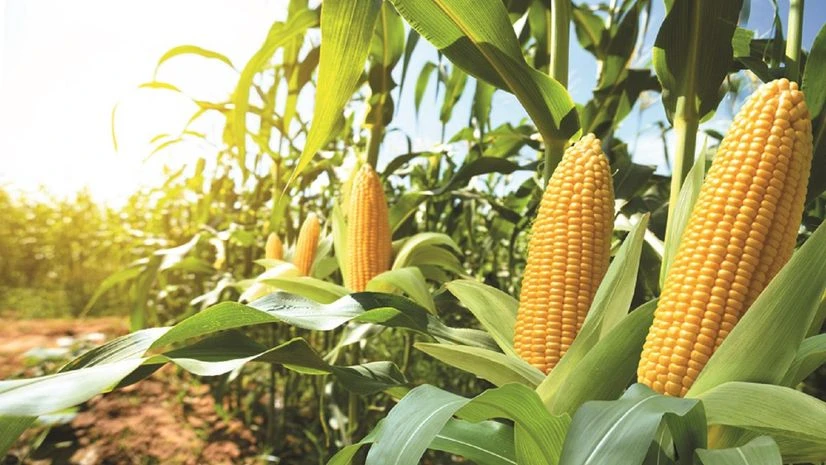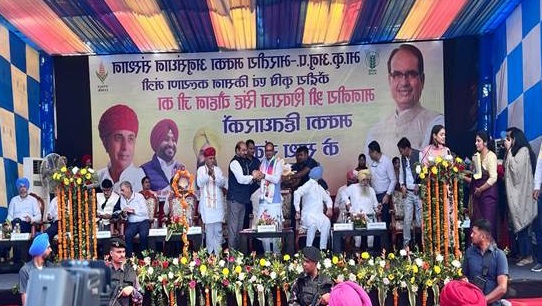
At the 11th India Maize Summit organized by FICCI, Union Agriculture Minister Shivraj Singh Chouhan unveiled an ambitious vision to more than double India’s maize production from 42.3 million tonnes to 86 million tonnes by 2047. As the world’s fifth-largest maize producer, India is prioritizing high-yielding, high-starch, non-GM seed varieties to meet the growing demand for food, animal feed, poultry feed, starch, and ethanol production.
𝐒𝐭𝐫𝐚𝐭𝐞𝐠𝐢𝐜 𝐈𝐧𝐬𝐢𝐠𝐡𝐭𝐬 𝐟𝐨𝐫 𝐒𝐞𝐜𝐭𝐨𝐫-𝐒𝐩𝐞𝐜𝐢𝐟𝐢𝐜 𝐌𝐚𝐢𝐳𝐞 𝐏𝐫𝐨𝐝𝐮𝐜𝐭𝐢𝐨𝐧
Experts at the Summit, including insights from the FICCI-YES BANK knowledge report, emphasized a tailored approach to maize production to address diverse sectoral needs:
𝐏𝐨𝐮𝐥𝐭𝐫𝐲 𝐅𝐞𝐞𝐝 (51% 𝐨𝐟 𝐝𝐞𝐦𝐚𝐧𝐝): With poultry feed consuming the largest share, experts advocate for maize varieties with high energy content to support India’s booming poultry sector. The focus is on scaling production to close the demand-supply gap, as consumption grows at 6.7% annually compared to production at 5.8%.
𝐀𝐧𝐢𝐦𝐚𝐥 𝐅𝐞𝐞𝐝: Maize’s role as a key livestock feed ingredient requires varieties optimized for nutritional value, such as distillers’ dried grains with solubles (DDGS) from ethanol production, which substitutes 1.2 tonnes of maize grain per tonne. Investments in feed processing infrastructure are critical.
𝐒𝐭𝐚𝐫𝐜𝐡 𝐈𝐧𝐝𝐮𝐬𝐭𝐫𝐲: The starch sector demands maize with higher starch content (targeting 72% from the current 65-70%) to enhance industrial applications like biodegradable plastics, textiles, and pharmaceuticals. Research into specialized hybrids is underway.
𝐃𝐢𝐫𝐞𝐜𝐭 𝐂𝐨𝐧𝐬𝐮𝐦𝐩𝐭𝐢𝐨𝐧 (22% 𝐨𝐟 𝐩𝐫𝐨𝐝𝐮𝐜𝐭𝐢𝐨𝐧): For food uses like cornmeal, flour, and sweet corn, experts stress developing consumer-preferred varieties (e.g., baby corn, popcorn) to diversify markets and boost farmer incomes.
𝐄𝐭𝐡𝐚𝐧𝐨𝐥 𝐏𝐫𝐨𝐝𝐮𝐜𝐭𝐢𝐨𝐧 (18-20% 𝐨𝐟 𝐝𝐞𝐦𝐚𝐧𝐝): With India’s E30 ethanol blending target by 2030, maize hybrids with enhanced fermentable content (64-65%) are vital. Production must grow at 8-9% annually to reach 65-70 million tonnes by 2030, supported by mechanization and policy incentives.
𝐓𝐡𝐞 𝐑𝐨𝐚𝐝 𝐀𝐡𝐞𝐚𝐝
To achieve these goals, collaboration is key. Subroto Geed from Corteva Agriscience highlighted maize as a “national imperative,” urging advancements in resilient seed systems, digital agriculture, and mechanization. The Indian Council of Agricultural Research (ICAR) has already developed 265 maize varieties, including 77 hybrids, but more innovation is needed to improve yields (currently 3.7 tonnes/ha) and ensure sustainability.
India’s maize sector is poised for transformation, balancing food security, industrial growth, and environmental sustainability.
Source : Linkedin






